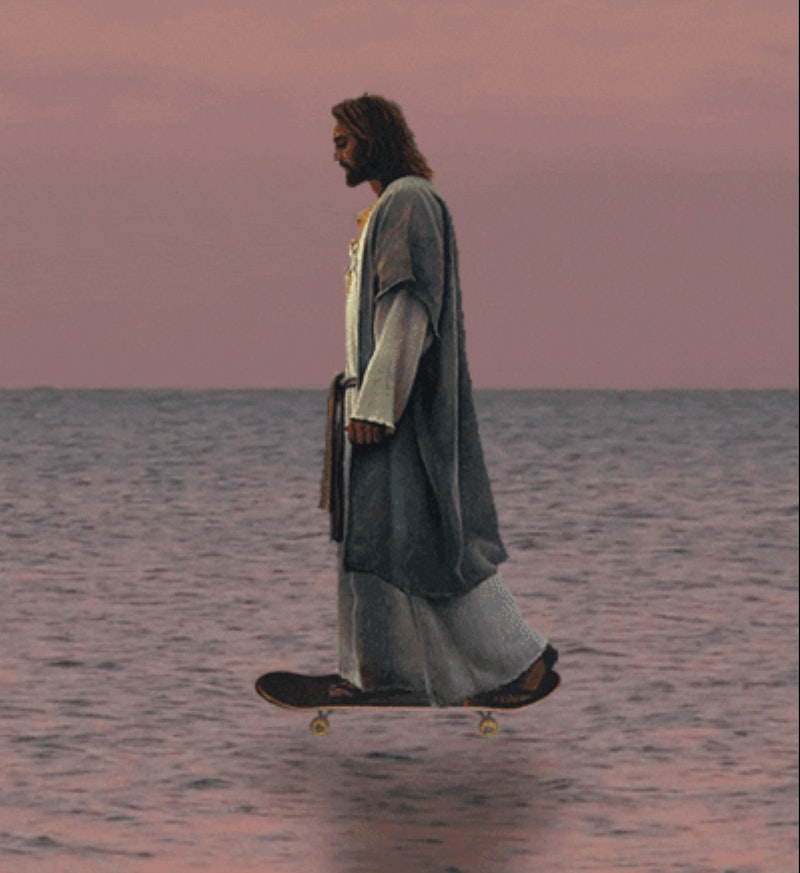Want to feel good about America? Take 15 minutes and watch this video. It’s about the creation of Grlswirl. Started in 2018 when nine girls on a text chain in California decided to get together and encourage themselves and others to take up skateboarding, the group now is thousands strong and has held over 100 public group skates.
Seeing the pictures and video of the Grlswirlers, who describe themselves as “the world’s okayest skaters,” it seems like an America that was lost to terrible politicians, digital addition, sexual confusion, depression, and pandemic scares. Grlswirl is a world of smiles, laugher, joy and fun. It’s for girls only. There’s no cursing, nudity, violence of blasphemy.
Additionally, what the Grlswirl video depicts is a group of young ladies embracing the sacred. Skateboarding, an activity I’ve done since I was a kid in the 1970s, has always been tied to holiness for me—and other riders. In the Grlswirl video, riders talk about feelings of peace, calmness and “freedom.” A couple of years ago I was skateboarding down a beautiful slope of connecting suburban streets. At one point my route ran past the house of a childhood friend, who was watching me from her large living room window. She came outside and was curious: What was I doing out there? What led me to launch downhill on a skateboard, particularly at age fiftysomething, and float through the Maryland countryside?
My answer was at first technical. I ride a Carver skateboard, I told her, because they have this fantastic patented swivel design in the front truck that makes it move like a surfboard and these great graphic designs, and it’s good for balance. Skateboarding is good exercise. That’s great, she replied—but why, in my heart, did I skateboard? I love the feeling of the air against my face, I said, and how the streets look as you ride by, and the funny dogs that come to greet you, and the feeling of being in motion even as God’s wondrous cosmos is in motion.
“Oh,” she said. “So you’re out there praying.”
I just looked at her, stunned. Yes. Skateboarding is like praying. My friend and I had both gone to Catholic schools, and didn’t the Jesuits teach us to be “contemplatives in action?” That was as good a description of skateboarding as any. It’s no wonder that many skateboarders become born-again Christians. Many are still active and a part of the Christian Skaters International Ministry.
What the Grlswirlers and others are doing when riding is a form of “holy noticing.” It’s a Christian prayer. In his book Holy Noticing: The Bible, our Brain, and the Mindful Space Between Moments, Charles Stone argues that mindfulness is not New Age, but biblical. He defines mindfulness as “the art of holy noticing—noticing, with a holy purpose, God and His handiwork, our relationships, and our inner world of thoughts and feelings.” He goes on: “Should Christians embrace [mindfulness] just because everyone else is doing it? No. Much about mindfulness in popular culture has nothing to do with God, Jesus, the Bible, or Christianity. And ‘Christianizing’ the latest fad dilutes the faith and can lead us astray.“
So we keep our eyes on the Lord. Stone’s book shows how the Bible and church history support the discipline of holy noticing. Like Philippians 4:8: “Finally, brethren, whatever is true, whatever is honorable, whatever is right, whatever is pure, whatever is lovely, whatever is of good repute, if there is any excellence and if anything worthy of praise, dwell on these things.” Pure, lovely, excellent—anyone who has ridden in California at sunset knows these words. Stone also cites Christian leaders such as J.I. Packer, Tim Keller, Oswald Chambers, C.H. Spurgeon, C.S. Lewis, and J.P. Moreland. The book also shows how Origen, Calvin, Luther, Wesley, and Moody advocated various aspects of holy noticing.
Riding down hills with the sun on your face, totally present in the beautiful world the Lord made, thanking Him for his creation, is a pure form of contemplative prayer. In her book Christ-Centered Mindfulness: Connection to Self and God Katherine Thompson goes through the history of Christianity to reclaim a Christian mindfulness practice where the focus is on Christ. Like Stone, Thompson says Christ-centered mindfulness is “a form of prayer that dates back hundreds of years.” Christian mindfulness or meditation is based on “contemplative prayer,” the silent prayer in which you focus your mind on God. This was the exercises of St. Teresa of Avila, St. Ignatius Loyola, and Thomas Merton. “Contemplation is the highest expression of man’s intellectual and spiritual life,” Merton, a Trappist monk, wrote. “It is spiritual wonder. It is spontaneous awe at the sacredness of life, of being. It is a vivid realization of the fact that life and being in us proceed from an invisible, transcendent and infinitely abundant source. Contemplation is, above all, awareness of the reality of that source.”
Even secular riders get this. Kyle Beachy is a novelist and a writing teacher, as well as a skateboarder. His book The Most Fun Thing is about the “sacred” act of skateboarding. The different riding styles can reflect the different aspects of human nature—sometimes cautious, sometimes daring, sometimes foolhardy. Visiting a favorite Chicago spot where he rides, Beachy reaches for the metaphysical: “This is where the meaningless activity [of skateboarding] has brought me. Via a long sequence of questions about selfhood and performance, about watching and comprehending, I have come to think that the style skateboarders speak of might, in fact, be a tool for understanding what mankind use to call the soul.”
The Grlswirlers are a positive and growing community, something effervescent and fun. Far away from phones and screens, making friendship and encouraging mindfulness in God’s world, rejecting an obsession with politics, getting outside, they’re a shredding sign of contradiction.

